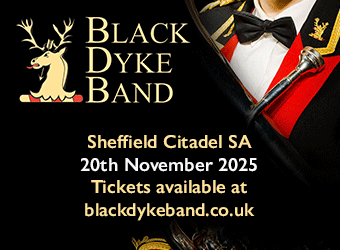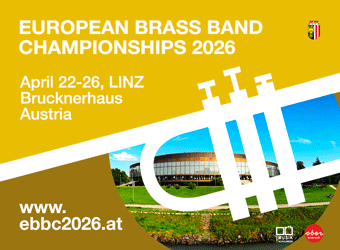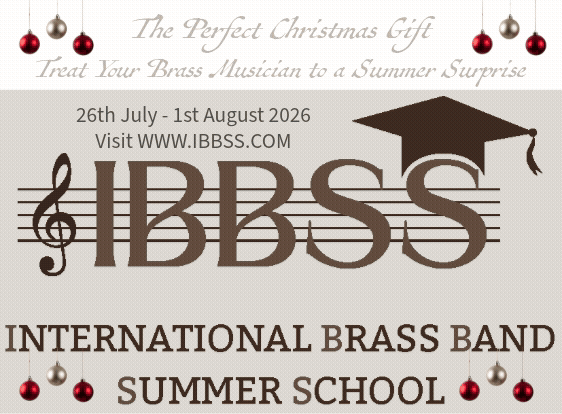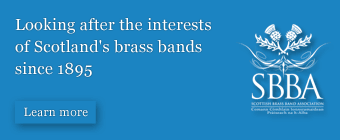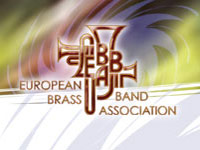 As was the case in 2010, all the competing bands have made different choices to showcase their talents in the own choice discipline on Saturday.
As was the case in 2010, all the competing bands have made different choices to showcase their talents in the own choice discipline on Saturday.
As last year, two bands will give world premieres, with ‘Destroy, Trample, as Swiftly as She’ by Gavin Higgins and ‘A Symphony of Colours’ by Simon Dobson, whilst one will give a contest premiere in 'Old Licks Bluesed Up’ by Torstein Aagaard Nilsen.
The remaining seven will reprise works that have been played over 50 times at the contest since 1978.
’From Ancient Times’, was used as the set work for the competition in 2009, whilst ‘A Tale as Yet Untold’, (2010) ‘Montage’ (2001) and ‘Music of the Spheres’ (2004 & 2007) have been used by bands winning the own choice discipline of the contest.
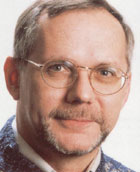 A Tale As Yet Untold
A Tale As Yet Untold
Philip Sparke
’A Tale as Yet Untold’ was specially commissioned for the European Brass Band Championships in Linz, Austria, 2010.
The theme of the work, which is set in three movements, is one that recurs again and again throughout the music of Philip Sparke – specifically a series of works for concert band: the Trombone Concerto, Deserts, When the Spirit Soars and Spirit of the Sequoia – which take as their subject the power of the human spirit to overcome adversity and how the beauty of music can help in this respect.
The ‘tale’ of the title is an autobiographical one which the composer feels need not be divulged to explain the programme of the music, which deals with a much more general human condition.
The first movement opens with a nervous repetitive figure in the cornets, under which an impassioned theme develops.
This is cut short by a closely related faster section which comprises two alternating moods: an aggressive ‘toccata’ interspersed by a yearning 6/8 melody.
The second movement is the heart of the work and symbolises the ability of the human soul to overcome the ‘Sturm und Drang’ of the first movement with an indomitable sense of optimism.
The third movement tries to negate this feeling of peace but ends triumphantly in a salute to the power of the human spirit.
Used at European:
2010: Cory*
*Won the own choice sections of the contest
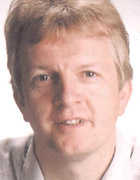 From Ancient Times
From Ancient Times
Jan van Der Roost
’From Ancient Times’ is inspired by the Franco-Flemish School of the Renaissance – from the great artists such as Rubens, Van Dijck, Breughel and Van Eyck, to the composers, many of whom have possibly been forgotten in the passing of time.
Men such as Desprez, Lassus, Willaert, Ockeghem, Obrecht, Isaac, Dufay and de Monte, may well sound like members of the 1982 Belgium World Cup squad, but are in fact the great names of the ‘golden age’ of Low Country composition, who Van der Roost believes are the originators of Western music.
These are the men who inspire the work to be used as the European test piece Iin2009 – the men whose ciphers, (although there are no direct references – Van der Roost describes them as ‘winks’) permeate from start to finish.
A more liberal feeling of historical context is also apparent in the ‘homage’ (as the composers states) to such figures as Adolfe Sax and the Gregorian reminiscences that bring a distinct touch of the medieval to the opening sections of the composition.
There is however no artifice to the end product.
The composer’s rich stream of musical thinking develops the oblique opening monastic statements with a very modern twist.
Those who have heard ‘Albion’ will be aware of his technique of ‘intertwining’ various individual musical lines in a form of dislocated canon, an effect that starts early in the work with the muted euphonium and baritone, who are to be stationed ‘back stage’.
The subsequent musical development includes subtle changes in style complimented by less subtle interjections (especially from the trombones, who have a great deal of work to do from start to finish). Their robust entries seem almost comedic at first, but as the work progresses they provide a foundation of nobility that becomes ever more striking.
The composer’s dark wit is borne with almost Dorothy Parker like sharpness: a medieval dance called an Estampie, with it play on the acronym’s of EBBA and VLAMO (Flemish Amateur Music Organisation) is brought to life with a twist of the intellectual mind that only those who can do the Times Crossword in 10 minutes find side splitting, whilst the rest of us find difficult to work out.
Although played in one continuous movement, there are very distinct sections to ‘From Ancient Times’ that are clearly indicated not just in the score.
For those with a desire to see players tested to the full (and perhaps beyond), the series of senza misura cadenzas will provide the most obvious focal point.
Underpinned by a soft free flowing percussion foundation (who have a great deal to do throughout), the flugel starts a series of complex showpiece offerings that at times are played singularly, at others in tandem with compatriots.
Each requires a very high degree of virtuosity (again – not just mechanical brilliance – expression is deliberately called for), with fearsome contributions from the baritone and solo horn in particular.
If overcome with aplomb a conductor and his band can perhaps seal their performance in the lovely following section – a homage to Adolphe Sax, that has an almost ethereal beauty.
This develops from its simplistic opening source almost as quickly as Sax developed his range of brass instruments.
Soon we are entering high speed technical work that encompasses huge variances in technique before a return to a majestic noble finish (‘like an organ’ states the composer) and an almost Sparke like romp to the end, topped by a soprano screaming out a top D (with pause)!
It also rounds off a hugely enjoyable original work that extends the composer’s obvious desire for archaeological exploration with a very individual interpretation of his findings.
Iwan Fox
Used at European:
2009: Set work
 Music of the Spheres
Music of the Spheres
Philip Sparke
'Music of the Spheres' was written late 2003/early 2004 and reflects the composer's fascination with the origins of the universe and deep space in general.
The title comes from a theory, formulated by Pythagoras, that the cosmos was ruled by the same laws he had discovered that govern the ratios of note frequencies of the musical scale. (‘Harmonia' in Ancient Greek, which means scale or tuning rather than harmony – Greek music was monophonic).
He also believed that these ratios corresponded to the distances of the six known planets from the sun and that the planets each produced a musical note which combined to weave a continuous heavenly melody (which, unfortunately, we humans cannot hear). In this work, these six notes form the basis of the sections 'Music of the Spheres' and 'Harmonia'.
The pieces opens with a horn solo called t = 0, a name given by some scientists to the moment of the Big Bang when time and space were created, and this is followed by a depiction of the 'Big Bang' itself, as the entire universe bursts out from a single point.
A slower section follows called 'The Lonely Planet' which is a meditation on the incredible and unlikely set of circumstances, which led to the creation of the Earth as a planet that can support life, and the constant search for other civilisations elsewhere in the universe.
'Asteroids and shooting stars' depicts both the benign and dangerous objects that are flying through space and which constantly threaten our planet, and the piece ends with 'The Unknown', leaving in question whether our continually expanding exploration of the universe will eventually lead to enlightenment or destruction.
Philip Sparke
Used at European:
2004: Yorkshire Building Society*
2005: Stavanger; Brass Band Willebroek; Treize Etoiles
2006: Brass Band Fribourg; Lyngby Taarbaek
2007: Brass Band Willebroek*; Goteborg; Brass Band Aeolus
2008: Stavanger; Kirkintilloch
2009: Concord Brass Band
*Won the own choice section of the contest
 A Symphony of Colours
A Symphony of Colours
Simon Dobson
The title of my work ‘A Symphony of Colours’ is in reference to the rare condition Synesthesia (literally meaning ‘crossed’ or ‘together senses’), in which people can see colours or smell scent in response to hearing music.
One of the most famous people who had this condition was the French composer Olivier Messiaen, to whom this piece is a homage.
My work begins with a sideways glance at Messiaen’s great organ work ‘L’ascention’ – in particular the fanfare-like third movement entitled ‘Transports de joie d'une âme devant la gloire du Christ qui est la sienne (‘Ecstasies of a soul before the glory of Christ, which is its own glory’), usually just known as ‘Transports de joie’.
This movement, ‘Joy’, seeks to show the solace that Messiaen seemed to find in his own spiritual beliefs.
The second movement is a journey through my own perception of synesthesia (which since my childhood I have myself experienced to some degree, before I knew what it was).
‘Chroma’ flows through individually subtitled movements charting the various sounds and moods that I associate with different keys and colours, along the way we visit Messiaen infused harmonies, dream-like states and twisted jazz.
A ‘white noise’ choral leads us into the third, percussion lead movement.
‘Endless time’, is a reflection upon perhaps Messiaen’s most famous work ‘Quatre pour la fin du temps’ (Quartet for the end of time), and strives to show a sense of serenity far from the reality of the terrifying subject matter of Messiaen’s own work.
The works title was supposed to convey feelings about a moment when time didn’t exist and hung still, rather than ended.
My movement contains minimalist moments as well as brooding Messiaenic harmonies to show the eternal nature of humanity’s spirit of endurance.
The final movement of the work is in response to Messiaen’s ‘L’ascention’.
In this piece he charts Christ’s ascension to Heaven. In my conclusion, ‘The Ascent’, I seek to portray the furthering evolution and growth of the human spirit.
During this movement I show distorted glimpses of Messiaen’s ‘Turangalila Symphony’, as well as more dissonant and foreboding figures to show that the path is not easy.
The work ends with a grand organ-like finale, thundering to a close redolent of Messiaen’s own organ work and portraying humanity’s striving for betterment.
Simon Dobson 2011
 Montage
Montage
Peter Graham
'Montage' was commissioned by the All England Masters Brass Band Championships to be used for their contest in 1994, which was won by the BBS Fodens Band conducted by Howard Snell.
Peter Graham had written extensively for brass bands before he wrote 'Montage', but this composition represented a major shift in his compositional outlook and sought its inspiration from the likes of Lutoslawski and Messian.
It is a three-movement work that lasts around 15 minutes in duration.
The first movement ‘Intrada’ forms a perfect ABCBA arch. Generative thematic fragments appear in A above a pulsating timpani line which in turn is mirrored by the glockenspiel; B is characterised by glittering cornet work and figures whilst C is a sinuous duet punctuated by sharply descending semitones. It has some huge technical demands for trombone, euphonium and cornet, as well as soprano, baritone and horn.
Although it may be the least difficult of the three movements in the piece, it is the one that could cause the most difficulty.
The ending in particular is elegant and subdued, but still has an underlying pulse that means that it has forward momentum. Relax too soon and it will all come to a rather dribbling halt.
The middle movement is a beautiful detached chaconne, both expressive and melodic which revolves around a chord sequence, which builds to the climax of the whole piece.
The opening requires balance and sensitivity from the cornet section before the solo cornet explores the limits of their lyrical playing ability with a sublime extended solo.
It is later joined by an equally expressive euphonium in a duet of complex yet thoughtful writing.
Smaller interjections from horn and soprano lead once more to the reiteration of the main thematic material before a lovely subdued ending in which the cornet soloist once more must reveal an understanding of line and musical shape right to the very end.
The final 'Rondo' is full of drive and verve and moves towards a powerful conclusion, direct from the opening soprano and bass feature towards to very ending, which makes immense demands on player's stamina and technique.
It opens with the now infamous soprano and Eb tuba jumping duet before it evolves into complex rhythmic patterns which gave a foundation to a soaring main tune.
These elements are further developed as we head on with an immensely difficult section of writing involving shock notes from the trombones, followed by interjections from the xylophone and cornets which build to the start of a ground bass theme and the run for home.
This builds once more to a huge climax and a return to the monothematic material explored in the opening movement.
The composer has noted that it explores in musical terms the flight of an arrow in the sky before it then ultimately returns to earth - the final bars in particular should be played without recourse to over exaggerated rallentando.
Iwan Fox
Used at European:
1994: Manger Musikklag
1995: Tredegar, Tertnes
2000: De Cuivres Valaisan, Point of Ayr
2001: YBS*
2003: Lyngby Taabaek
2004: Willebroek, Gotenburg
*Won the own choice section of the contest
 Concerto for Brass Band
Concerto for Brass Band
Kenneth Downie
‘Concerto for Brass Band ‘ was originally commissioned by Geo-Pierre Moren and Treize Etoiles Band as an own choice selection for the 2007 Swiss National Championship.
In 2008 the ‘Scherzo’ movement was cut for time purposes and the piece was renamed ‘Concertino for Brass Band’ to be used as the set work for the Championship Section final of the National Championship of Great Britain.
The opening 'Allegro' is the most highly organised of the three used there, and the most detailed in its fragmentary writing.
It owes a debt to Wilfred Heaton’s ‘wonderful creative methods’ seen in his iconic ‘Contest Music’.
The slow second movement is expansive, while the rapid moto perpetuo finale is very compact.
The ‘Scherzo’, which becomes the third movement of the ‘Concerto’ is a dynamic looking – very challenging, full of energy and cinematic verve and more amply scored than the other movements.
This work was not composed as a set test piece and thus the composer was not tempted to halt the progress of his music by including set-piece solos or cadenzas.
This is a 'Concerto' for the whole band, and in that sense it ‘doffs its cap’ in the direction of celebrated works like the ‘Concertos for Orchestra’ by Bartok, Kodaly or Lutoslawski in giving everyone a moment in the spotlight.
Adapted from the original written for 4BR by Paul Hindmarsh.
 Titan’s Progress
Titan’s Progress
Hermann Pallhuber (written as John P Alliston)
Style and attention to detail are everything in Hermann Pallhuber’s 'Titan’s Progress'.
Loaded with borrowings from perhaps one of the greatest symphonists of all time, Gustav Mahler, this was Pallhuber’s first foray into composing for the British-style brass band.
The origin of Pallhuber’s title is Mahler’s '1st Symphony.'
According to Mahler’s friend, Natalie Bauer-Lechner, the symphony was to be understood as an expression of the ways in which a strong, heroic person confronts and struggles with the problems of life.
Mahler’s 1st symphony is a whistle-stop tour of the life of a heroic individual: it is from this concept that Hermann Pallhuber’s piece seems to take off.
Whereas Mahler saw Jean Paul’s novel as a capstone for his symphony, Hermann Pallhuber has used it as a structuring tool, drawing on much of the material from the novel itself; in this sense it is ‘programmatic’.
The piece opens dramatically with a short fanfare-like phrase, followed by a section marked by contrast between merciless aggression and dignified sonority. A more playful giocoso section follows, before the drama really begins at ‘presto’.
A sustained, almost-lyrical section follows, before we are plunged back into the agitated world we thought we’d left behind some moments ago.
Pallhuber’s next section picks up the humorous baton from the preceding section’s final bars, launching us into a ‘farandole’.
A calmer section with a beautiful euphonium melody follows, interspersed with ‘cheeky’ solos from the flugelhorn and baritone.
A tricky section with a playful soprano solo comes next, with a number of awkward time signatures and shifts in metre.
The closing section of this mammoth work commences with scurrying figures moving up through the band from the basses, building and building until the accompaniment dynamic suddenly drops and triumphant cornets emerge with the chorale theme we heard earlier.
Pallhuber reminds us of all the key Mahler themes he’s borrowed throughout the piece in this finale – and everyone seems to be involved.
A massive ‘allargando’ leads us into the final flourishes and fanfares before the enormous final chord rounds off this exciting, complex work.
Adapted from the original written for 4BR by Chris Davies.
Used at the European:
2005: Brass Band Oberosterreich
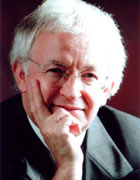 Rococo Variations
Rococo Variations
Edward Gregson
’Rococo Variations' was commissioned jointly by the British Open Championship and the Norwegian Band Federation, with the help of the Co-operative and is dedicated to the composer’s brother Bram.
THEME
A slow, stately pavane-like pulse underpins the simple outlines of the melody and its countersubjects. The composer suggests that this should be played without any indulgent nuance.
TOCCATA
This is fast and energetic, with the main theme condensed to its essence – the fifth presented as a chord and them embellished into rising and falling scales in canon.
SICILIANA
The falling fifth idea from the theme becomes the springboard for a wide-ranging solo cornet and euphonium duet, the countersubject of which morphs into a haunting melody from Steadman Allens’s 1957 suite ‘Lord of the Sea’.
WALTZ
This is pure tongue-in-cheek with, as the composer has said, “…a nod in the direction of the old air varie.”
Gregson includes an Eric Ball reference, although it sounds more like Tchaikovsky than Ball and in the middle it becomes quite sinister with 12-tone harmonies.
The little reference to ‘Journey into Freedom’ on the solo horn – pre-figured by running triplet figures that embellish the reprise of the waltz tune – adds to the air of ambiguity.
MOTO PERPETUO
Gregson combines the main theme of the whole work and the moto perpetuo ideas in the major key in the middle of the movement.
Thinking of John McCabe, it features a contraction of the falling fifth phrase into a scurrying scale mirroring the texture in works like 'Images' and ‘Cloudcatcher Fells’
LAMENT
The most intense and profound movement. Gregson builds it over a repeating bass line, a Chaconne, in which he takes his material about as far away from its original form as he could.
Intervals and harmonies are distorted. The tonality at the beginning is ambiguous, veering between major and minor.
FUGAL SCHERZO
A virtuoso finale - ‘diabolical’ in character, at least at the start. It’s not a conventional but Gregson does employ fugal techniques.
As it unfolds, he introduces some sinister elements, most especially a 12-tone counter-subject in long notes, giving the music an unsettled character.
This builds into the most technically accomplished few bars in the whole work - a suggestion of the brilliant fanfare from Monteverdi’s opera ‘Orfeo’, all in the space of eight bars – a real tour-de-force of musical imagination and processing.
Adapted from the original written for 4BR by Paul Hindmarsh.
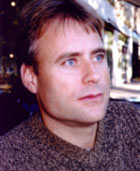 Old Licks Bluesed Up
Old Licks Bluesed Up
Torstein Aagaard-Nilsen
The work was commissioned by Manger Musikklag with support from the Norwegian Composer’s Fund and is dedicated to conductor Peter S. Szilvay.
The piece has three movements:
1. Toccata I
2. Ritornell
3. Toccata II
The title gives clues of how the piece can be understood.
The words "old" and the name of the movements connect us to the past. The word "licks" comes from blues, rock and jazz. Licks can be arpeggio-figures, scales and riffs that is regularly used in improvisations.
Toccata is a well known musical genre from the baroque keyboard music, a free flowing piece filled with energy.
The ritornell can be described as a refrain, in other words a reoccurring theme that we know from the ritornell form of the baroque era.
I have used licks inspired by both old masters and not so old masters, but no quotations! They´re all mine. Enjoy!
Torstein Aagaard-Nilsen
 Destroy, Trample as Swiftly as She
Destroy, Trample as Swiftly as She
Gavin Higgins
Donatien-Alphonse-Francoise de Sade, more commonly known as the Marquis de Sade, spent 27 years of his life behind bars.
He dedicated most his time in gaol to writing, and his legacy is a plethora of bleak, often deeply graphic books in which he peels back the lid on a broken society and shows humanity for what it really is.
Often juxtaposing explicit descriptions of violence and sex with a resolute, if not warped philosophy, Sade took the ideas of the French Enlightenment to its logical conclusion.
Within his claustrophobic tales, Sade ‘sweeps away all ethical values as illusions,’ and, ‘focuses attention on the beast in man to the exclusion of all else’ (from D. Coward, The misfortunes of Virtue, New York 1992).
Influencing artists, filmmakers and philosophers throughout the 20th century, his novels still hold the power to both shock and enlighten.
Sade presents his readers with a dark dystopia where power is given to the corrupt, aggressive and strong while the virtuous and weak are destroyed.
To Sade there is no God, no morality and no hope, but rather a ‘constantly repeated mechanical process of stimulation and sensation. There is temporary relief but no peace, for appetite is insatiable. There is no happiness, only fleeting exultation, perpetual dissatisfaction, an urgent need to begin again and the compulsion to increase the dose (D. Coward, The Crimes of Love, New York, 2005)
In ‘Destroy, Trample, As Swiftly As She’ I wanted to explore some aspects of Sade’s dark ‘philosophy’ and try to incorporate his ideas of an almost pre-Darwinian natural selection into my work, which consists of two core elements: aggressive gestures (flutter tongues, driving rhythms etc) and lyrically expressive moments (flugel horn solos, flowing ‘string-like’ lines etc)
As in his novel ‘Justine’ each section of lyricism is ‘punished’ by an attack of destructive force that gives way to a new section of aggressive power.
Despite the emotional heart of the work blossoming in two central passages of lyricism, it is a final inevitable onslaught of flutter tonguing and tam-tams that obliterate any chance of a happy ending.
The title comes from an introduction to Sade’s novel, ‘Philosophie dans le boudoir’, in his own introduction subtitled: To the Libertines: Destroy, trample, as swiftly as she, all the ridiculous precepts inculcated by moronic parents.
For me, Sade sums up this work perfectly in the same book:
There are thorns everywhere, but roses bloom over them on the road of vice. It is only on the muddy paths of virtue that nature won’t ever allow roses to blossom.
Gavin Higgins



